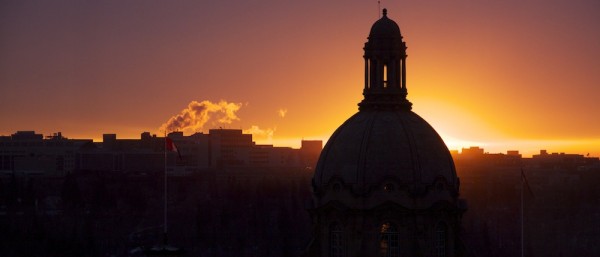Date of Alberta’s 2019 election: April 16, 2019
Date of Alberta’s next election: Between March 1 and May 31, 2023
Total number of votes cast in the 2019 election: 1,894,985
Total number of votes cast in the 2015 election: 1,488,248
District with highest voter turnout: 80.2 per cent in Grande Prairie-Wapiti
District with lowest voter turnout: 45.8 per cent in Calgary-East
Total number of re-elected MLAs: 41
Total number of new MLAs: 46
MLAs in the Government Caucus: 63
MLAs in the Opposition: 24
Number of women in the Government Caucus: 15 out of 63
Number of women in the Opposition Caucus: 11 out of 24
Most votes for a candidate: 20,579 for UCP candidate Jason Nixon in Rimbey-Rocky Mountain House-Sundre
Highest percentage of votes for a candidate: 81.6 per cent for UCP candidate Jason Nixon in Rimbey-Rocky Mountain House-Sundre
Longest serving re-elected MLA: Rachel Notley, MLA for Edmonton-Strathcona has served 4061 days since she was first elected in the 2008 provincial election.
Closest race: Calgary-Falconridge. UCP candidate Devinder Toor defeated NDP candidate Parmeet Singh Boparai by 96 votes.
Youngest elected MLA: Miranda Rosin, 23-years old, in Banff-Kananaskis.
Total vote for the United Conservative Party in 2019: 1,040,004
Total vote for the Wildrose Party and PC Party in 2015: 774,121
Total vote for the NDP in 2019: 619,147
Total vote for the NDP in 2015: 604,518
Total vote for the Alberta Party in 2019: 171,996
Total vote for the Alberta Party in 2015: 33,221
Total vote for the Liberal Party in 2019: 18,546
Total vote for the Liberal Party in 2015: 62,153
Categories
Alberta Election 2019: By The Numbers


4 replies on “Alberta Election 2019: By The Numbers”
While none of these numbers are particularly surprising, one of the most interesting sets of numbers is the comparables between the Alberta Party and the Liberals from 2015 & 2019. The Liberals garnered far more votes than the AP in ‘15, by a factor of about two, but this time their vote went way down while the AP’s went up, flipping that ratio on its head. In fact, the Liberals got less than a third of their 2015 vote total, while the AP quintupled theirs.
Clearly the Alberta Liberals are moribund as a credible political force in this province.
Not much to be read into the numbers past 63 and 24.
Mr. Cournoyer’s description of the NDP caucus as a “centre-leftish liberal-like party it was in government” in the previous post is a reach when you consider the NDP constitution which states the party aim is to promote the principles of democratic socialism (object: having a socialist economy in which the means of production (including wealth) are socially and collectively owned or controlled alongside a politically democratic system of government) and gives labour 25% of the leadership vote.
For alternative insight into election issues and results check Mark Milke’s April 28 article: “Missing the Plot in Alberta’s Election: What the Media Party Missed” in C2C Journal. Milke dissects numbers used in the NDP campaign, gives perspective by bringing out Klein government accomplishments, mentions the NDP wedge issue of gay-straight alliances and even comments on Mr. Adler’s Kenney interview.
Mr. Milke definitely brings a conservative viewpoint but he discusses voter issues in a realistic manner. Worth a look.
Cousin Al, thanks for sharing the article. Great read.
The idea behind the merger of the PCs and Wildrose was that 1+1=2. Some of us dismissed this, thinking that there is no way that former PC members would suddenly turn into social conservatives. We thought a sizable proportion would be looking to cast their votes for other parties including the NDP. Well it looks like we were wrong.